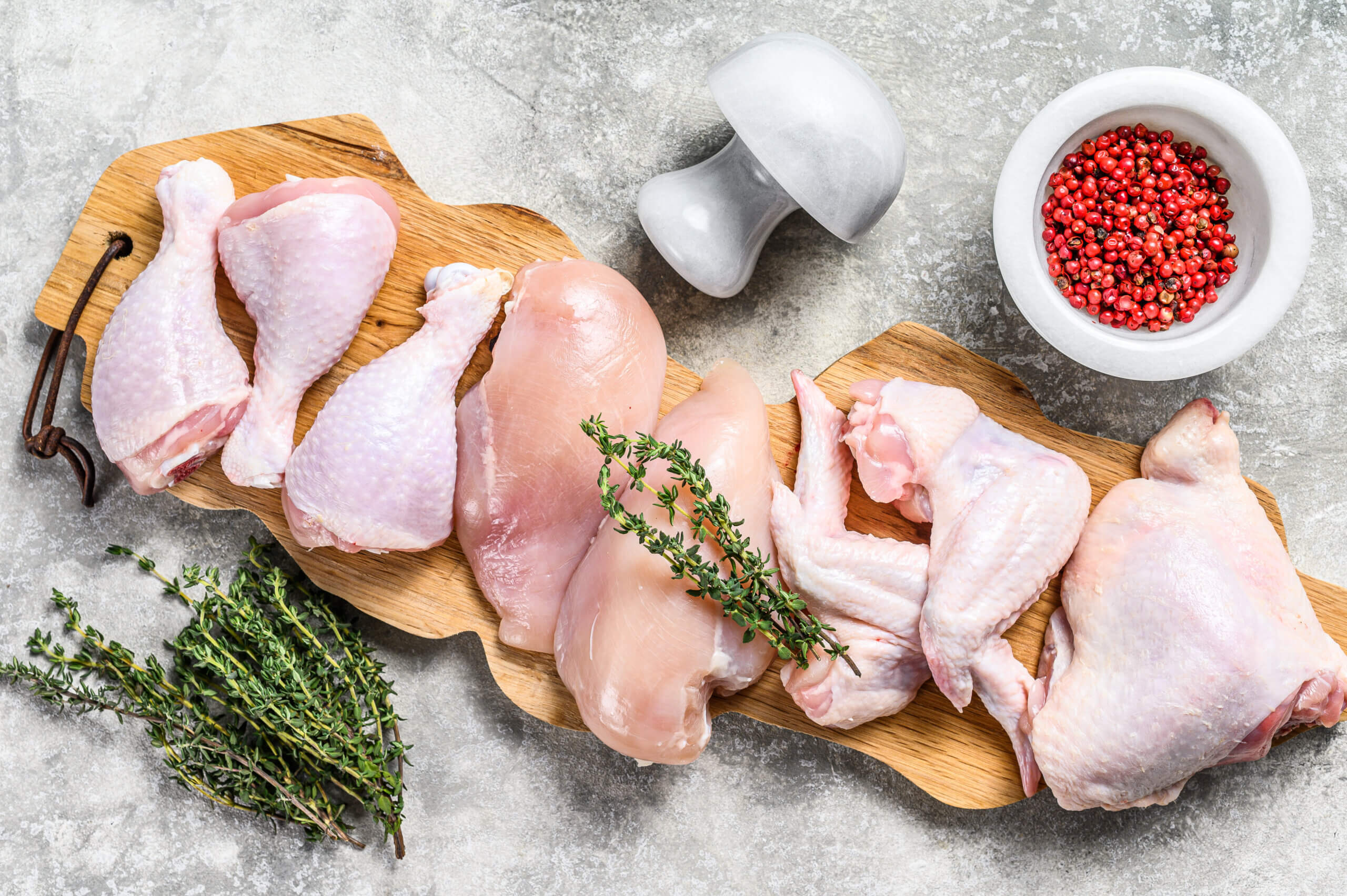7 Chicken Cuts Guide Discover the Best Uses and Save Money
From drumsticks to tenderloins, explore the cost, taste, and cooking uses of various chicken cuts, with prices ranging from $0.89 to premium levels.

Dive into our guide on chicken cuts as we examine each part, from the economic drumstick to the sumptuous tenderloin. We’ll investigate their cost, taste, and cooking uses. Put on your apron for this culinary journey! Chicken, a global favorite, presents an array of cuts differing in cost, texture, and taste. We’ll outline these cuts, ranking them by price.
Disclosure: As an Amazon Associate, this site earns from qualifying purchases. Thank you!
1. Drumsticks

Starting off our list are chicken drumsticks. Economical and flavorful, these cuts are the lower portion of the leg. According to Tom Super from the National Chicken Council, the average national price for chicken leg quarters, which includes drumsticks, is around $0.89 per pound. Drumsticks are sold bone-in and skin-on and are perfect for baking or grilling with a sticky glaze or marinade.
2. Wings

Next up, we have chicken wings. Despite their small size, these cuts pack a punch when it comes to flavor. At an average national price of $2.40 per pound, wings are usually sold bone-in and skin-on. Ideal for baking, frying, or grilling, they also make a potent chicken stock due to their high collagen content.
3. Thighs

Moving up the price ladder, we find chicken thighs. These cuts come in two variants: bone-in, skin-on thighs, and boneless, skinless thighs. While the former is cheaper, the latter, priced at approximately $2.28 per pound, offers convenience at a slightly higher cost. Thighs are part of the leg and are slightly fattier but much more flavorful than chicken breasts. They’re excellent for baking, grilling, or slow cooking.
4. Breasts

Chicken breasts are the leanest part of the chicken and come in two types: bone-in (split chicken breast) and boneless. The average national price for the split chicken breast is around $1.72 per pound. Despite taking longer to cook due to the attached bone, these cuts provide extra flavor and pair well with stuffing. On the other hand, boneless chicken breasts offer convenience and versatility, albeit at a higher price.
5. Tenderloins
The chicken tenderloin, also known as the chicken filet, is a cut of meat that is a part of the breast. However, it’s considered premium due to its tenderness and ease of preparation. These cuts are perfect for quick-cooking methods like pan-searing or grilling. The price reflects their premium status, with costs usually higher than regular chicken breasts.
6. Giblets

Giblets, while not the most expensive, are definitely a specialty item. This term refers to the heart, liver, and gizzard of the chicken. These parts are often used in making gravies, stuffing, or pâtés. Although they might not be everyone’s favorite, these parts are rich in flavor and nutrients.
7. Necks

Chicken necks, though not typically consumed as a standalone cut, are incredibly valuable in creating flavorful broths and stocks. They are usually quite inexpensive, but their culinary value cannot be underestimated.
8. Backs

Chicken backs are another cut often overlooked but perfect for making stock or broth due to their high bone content. While these cuts are often cheap, they can prove invaluable in the kitchen, especially for those who appreciate homemade soups and sauces.
The Cost and Quality of Chicken Cuts
The cost and quality of chicken cuts are influenced by processing labor, yield, and demand. Boneless, skinless breasts, and thighs are pricier due to deboning and skinning efforts. Tenderloins, with lower yields, are similarly costly.
The way a chicken is raised can also significantly impact the price. Free-range and organic chickens, such as those offered by US Wellness Meats, are raised on pastures and fed a diverse diet of grasses, legumes, and insects. These chickens require no added hormones and are antibiotic-free, resulting in healthier and tastier meat. However, these improved raising conditions come with higher costs, reflected in the price of the chicken cuts.
taste and texture of different chicken cuts
Chicken cuts vary not just in price but also in taste and texture. For instance, darker meat cuts like thighs and drumsticks have a more robust flavor and a juicier texture due to their higher fat content. On the other hand, white meat cuts like chicken breasts and tenderloins are leaner and have a milder flavor.
The taste and texture of chicken can vary based on its rearing; free-range chickens usually have more flavorful, firmer meat than conventional ones. Each cut, from budget-friendly drumsticks to high-end tenderloins, presents a distinct taste and cooking potential. Whether you prefer flavorful thighs or lean breasts, there’s a cut for every taste and budget. Learning about each cut’s characteristics and cooking methods is key. Consider exploring a new chicken cut at your butcher or meat market for a potential new favorite.






